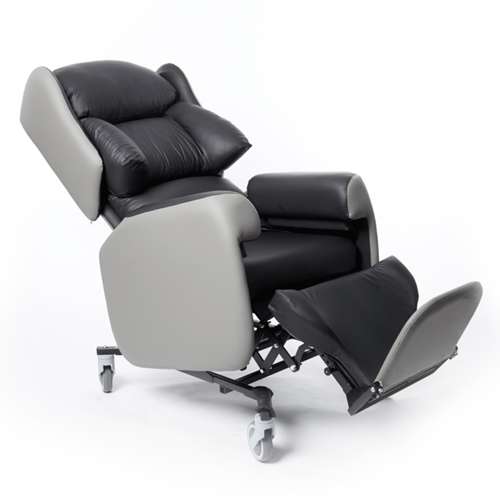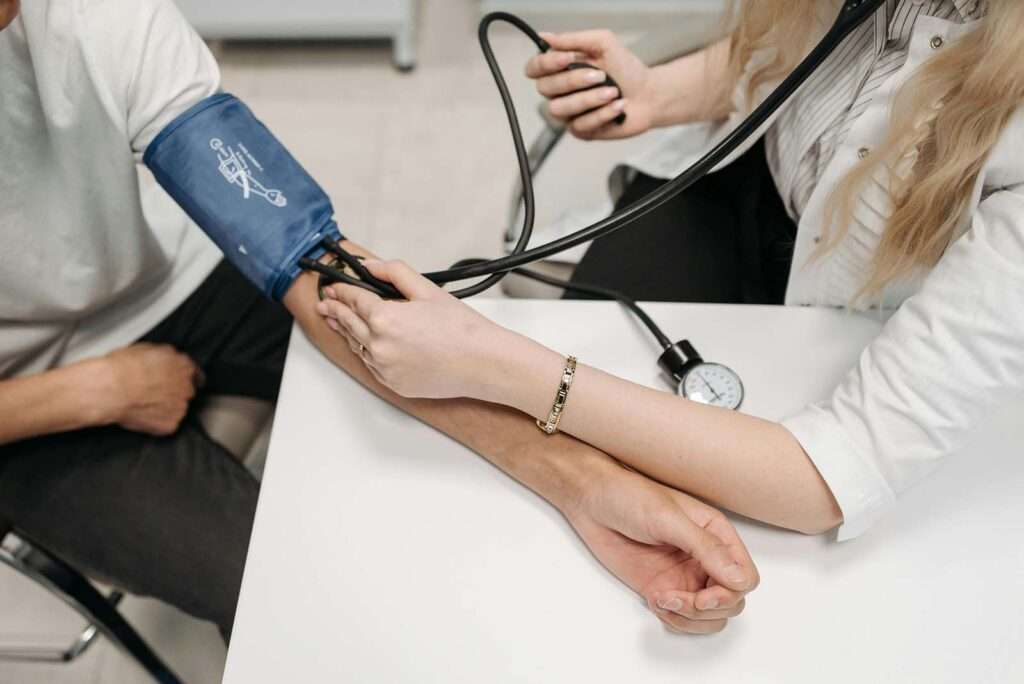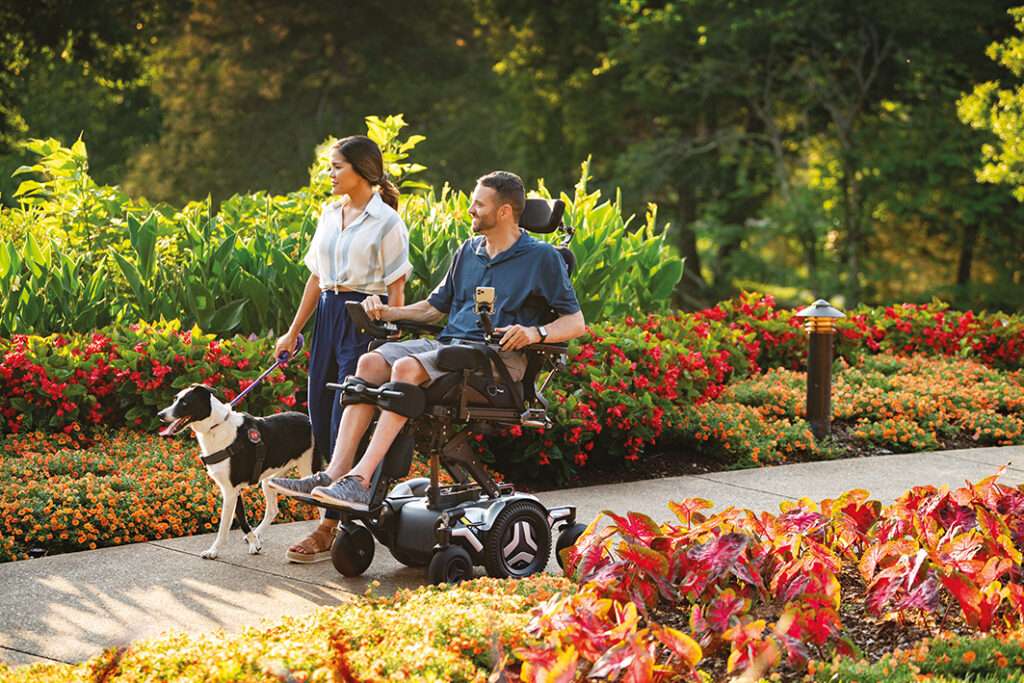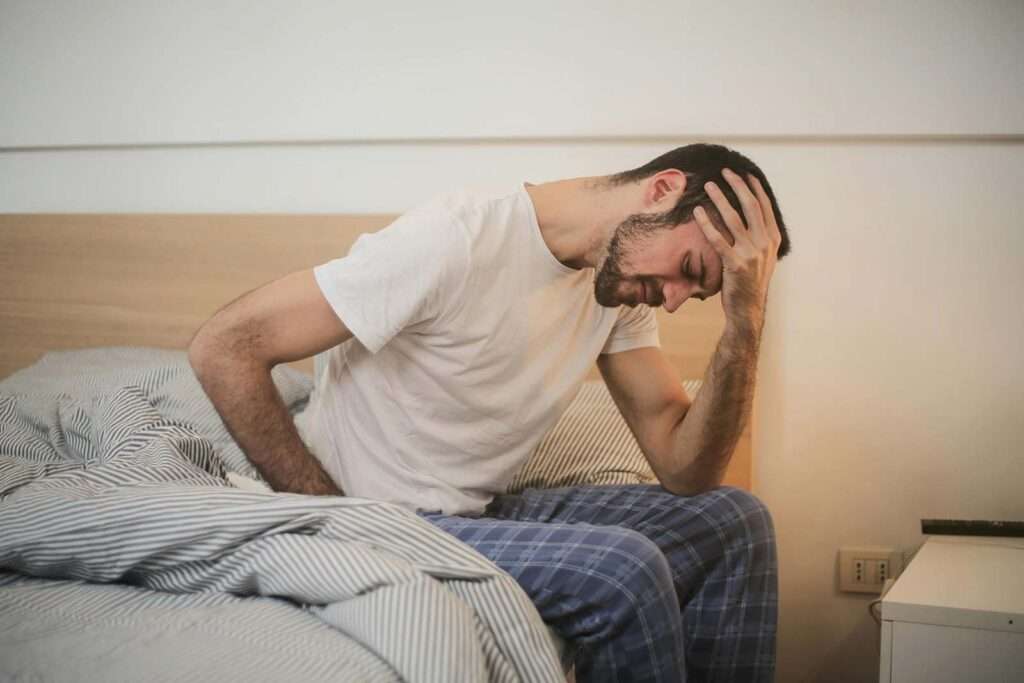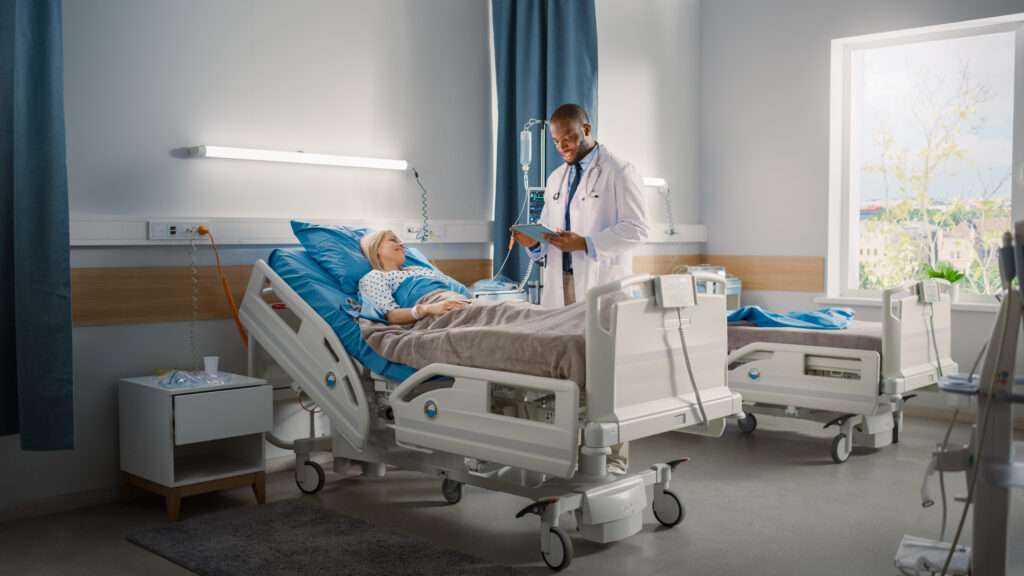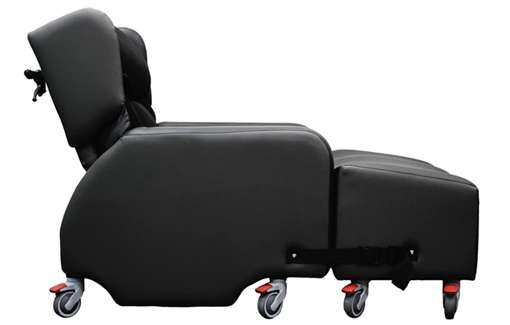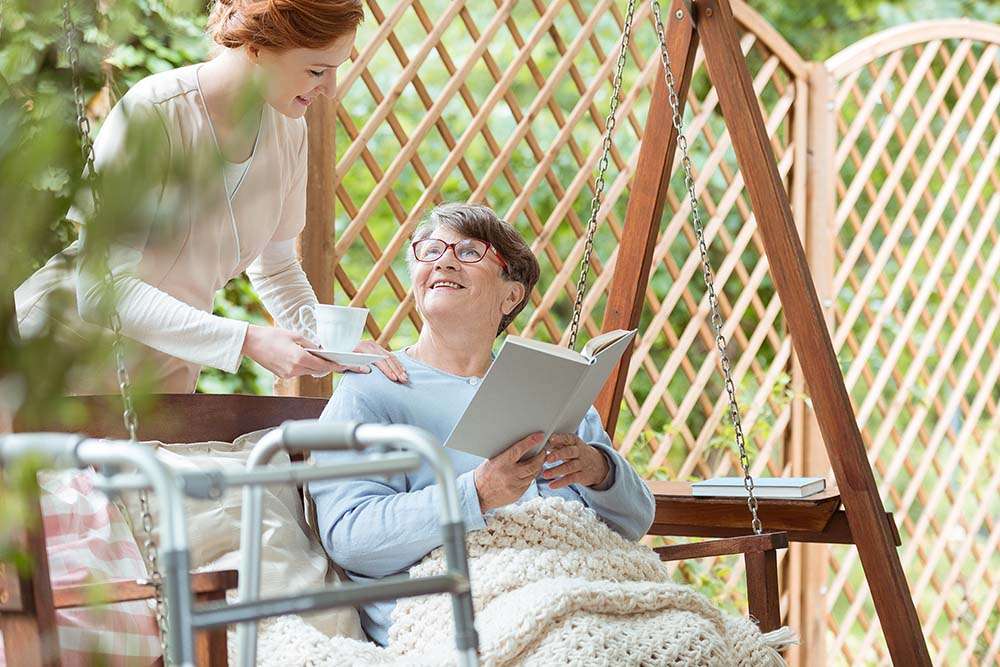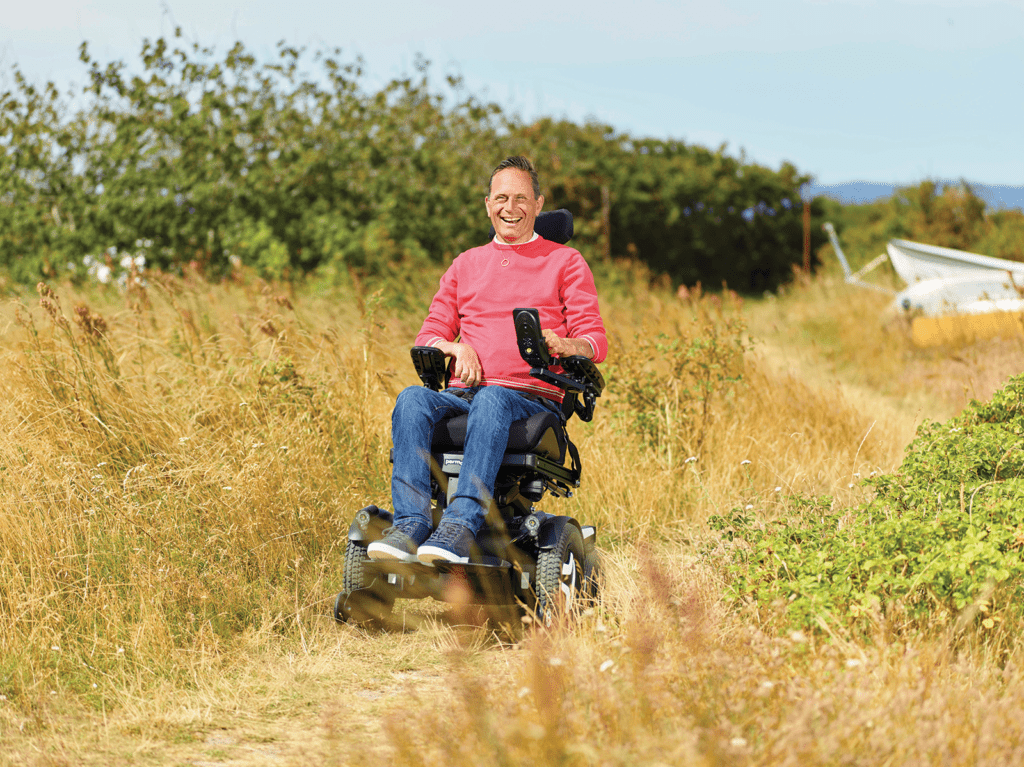Everyone needs a good night’s sleep, and some like more sleep than others! Although nothing beats your own bed for a quality night’s sleep, for older people and those with mobility issues, getting in and out of bed can be a challenge in itself.
When you are equipped with a comfortable riser recliner chair that you spend most of your time in, it is easy to doze off when you’re tired, and yes even sleep the full night in!
This article looks at the pros and cons of sleeping in your chair, and particular things you may want to look out for, depending on pre-existing conditions and your overall state of health.
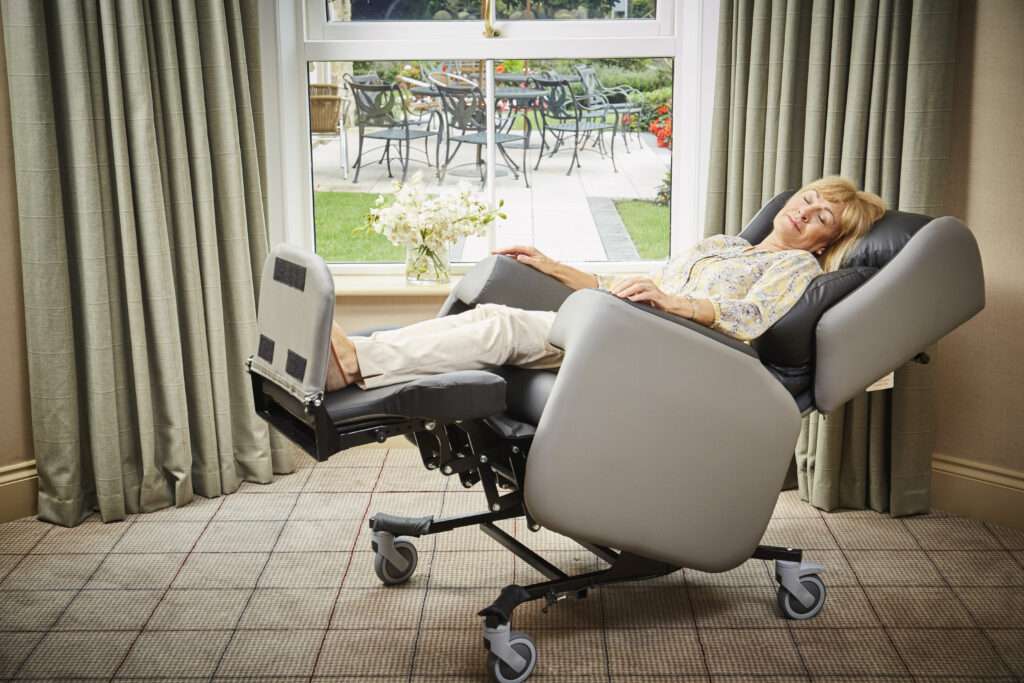
Jump straight to...
The Pros and Cons of Sleeping in a Chair
| Pros | Cons |
| Reduces acid reflux – better for sleeping after a meal | Can cause stiffness – muscles don’t completely relax |
| Helps digestion | Can exacerbate certain health conditions |
| Helps breathing, great for people who snore, have COPD or sleep apnoea | Cramped – not as easy to move around and change position, easier to fall out |
| Relieves back pain – good for sciatica sufferers
|
Fabric not as soft as mattress cover, can lead to pressure sores |
| Helps circulation – legs raised above hips helps blood flow back to the heart | Tightening of joints, contractures – muscles tightening over hip or knee joints |
| Reduces swelling and oedema from improved blood flow | Can increase risk of DVT |
| Takes up less space – all-in-one |
Pros
Reduces Acid Reflux
Acid reflux is when stomach acid used to digest food flows back up the windpipe, causing heartburn and inflammation in the throat and larynx. Using the backrest angle to raise the head above the stomach can stop the backflow of acid for those with this problem.
Helps Digestion
Having a raised back angle prevents acid from coming back up the oesophagus, which also improves digestion after a meal.
Helps Breathing
Not lying completely horizontally reduces pressure on the chest cavity and lungs, which is particularly beneficial for those with breathing problems like COPD or sleep apnoea. This can also help reduce snoring.
Relieves Back Pain
Sleeping in a more recumbent position reduces pain for people with chronic back conditions like sciatica. There is less pressure on the spine and this position can relieve pressure on the nerve endings that cause sciatic pain, and improve spinal alignment.
Improves Circulation
Raising the legs above the hips helps the flow of blood back to the heart, improving circulation and reducing inflammation.
Reduces Swelling
The improvement in circulation helps reduce swelling and oedema.
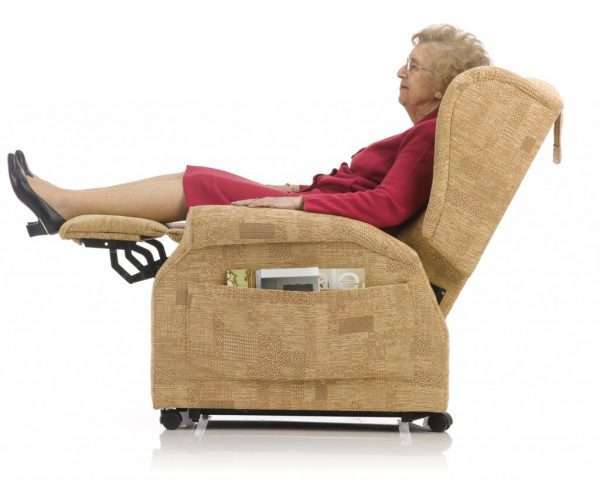
Takes up Less Space
If there is not enough space for a bed as well as a chair, it is a good space-saving solution to have a chair that doubles up as a bed!
Cons
Muscle Stiffness
As the body is not lying completely flat in the chair like when lying in bed, the muscles don’t all completely relax which causes aches and stiffness.
Exacerbates Underlying Health Conditions
Sleeping in bed helps the body to rest and restore physiologically, draining fluid and promoting healing. Sleeping in a chair doesn’t promote these conditions in quite the same way, making chronic health conditions like heart disease, neuralgia and COPD harder to manage.
Cramped
Sleeping in a chair can restrict movement, making it harder to move around and change position. Less space also makes it easier to fall out the chair if you move around in your sleep!
Contractures
When sitting in a chair for a long time, muscles can tighten over the hip and knee joints, leading to muscle contractures.
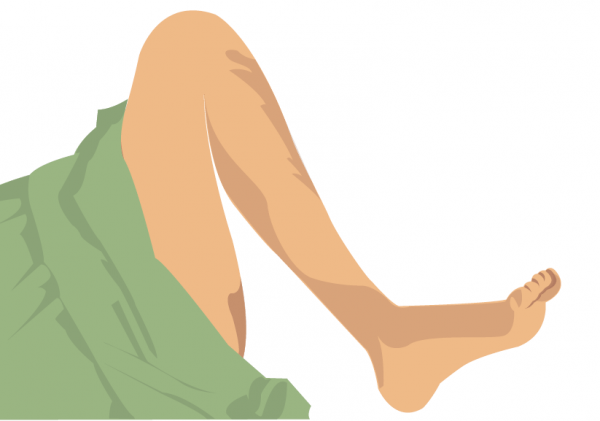
This illustration shows how someone’s leg can be positioned if they have a severe knee contracture
Increased Risk of DVT
Sitting for long periods of time can add stress and pressure on the lower legs, increasing the risk of DVT (deep vein thrombosis).
Choosing the Right Chair to Sleep in
The choice of chair can make all the difference to the quality of sleep experienced. Ensuring certain features are incorporated in the chair will ensure you maximise comfort when sleeping in a chair.
Waterfall Back
Waterfall cushions can be repositioned and have wadding removed to create a comfortable lying position for the back. View our range of made-to-measure recliners here with different backrests.
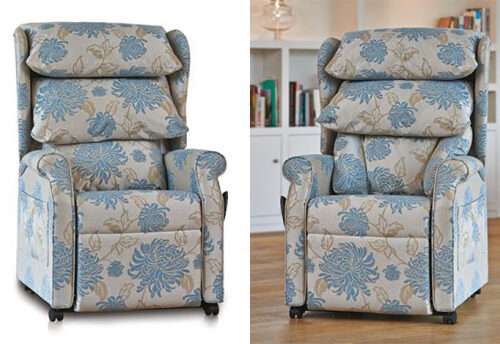
Lie Flat – Dual Motor
A dual motor chair has an independent backrest and footrest, so can be moved from a sitting position into a fully flat lying position when someone is in the chair. Our Dales range has single or dual motor options to choose from.
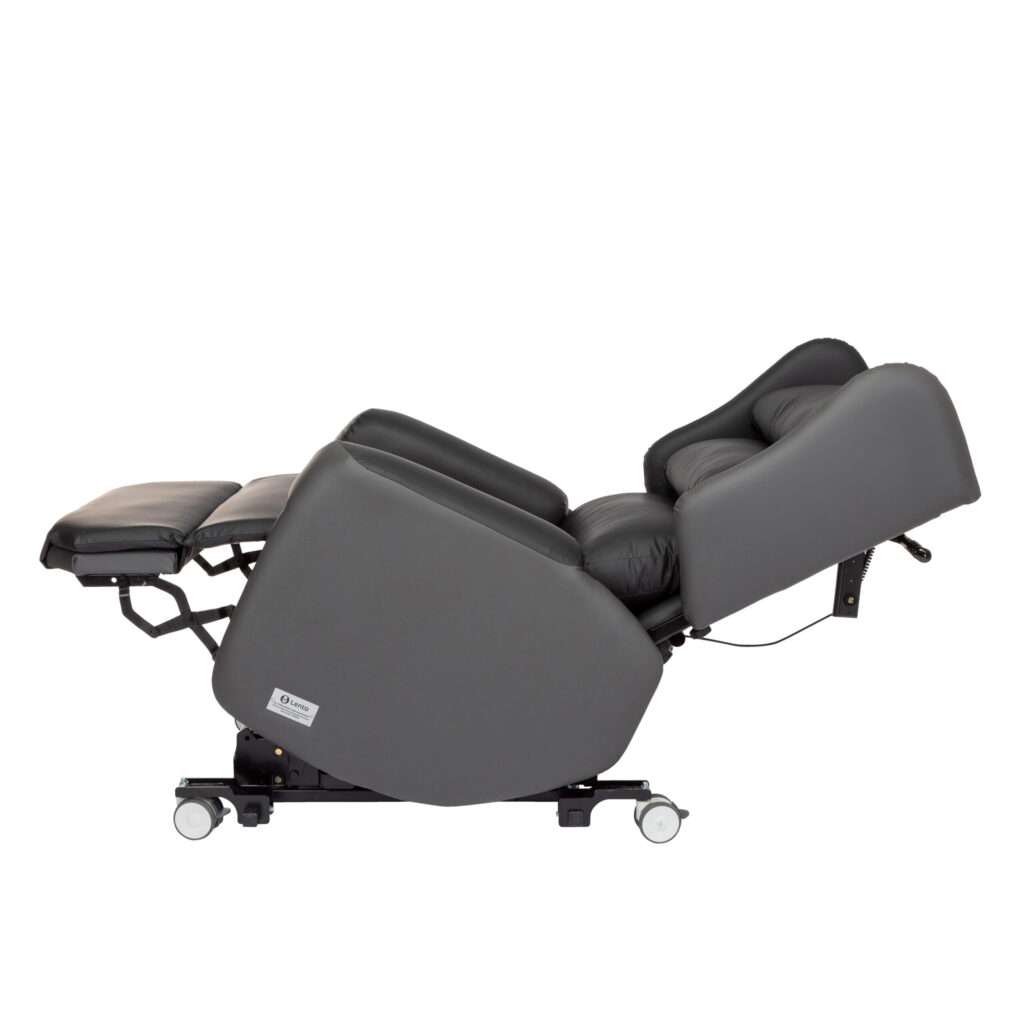
Lento Mobile Riser Recliner
Padding and Fabric
Incorporating extra pressure relief into the seat and backrest and having the right choice of fabric can improve comfort tremendously when sleeping in a chair. A layer of coolgel can be incorporated into the seat and legrest wrap that provides extra cushioning and cools the surface of the skin, providing a more comfortable sleeping experience. Our chairs are upholstered in a dartex material that is vapour-permeable and stretches to reduce friction on the skin.
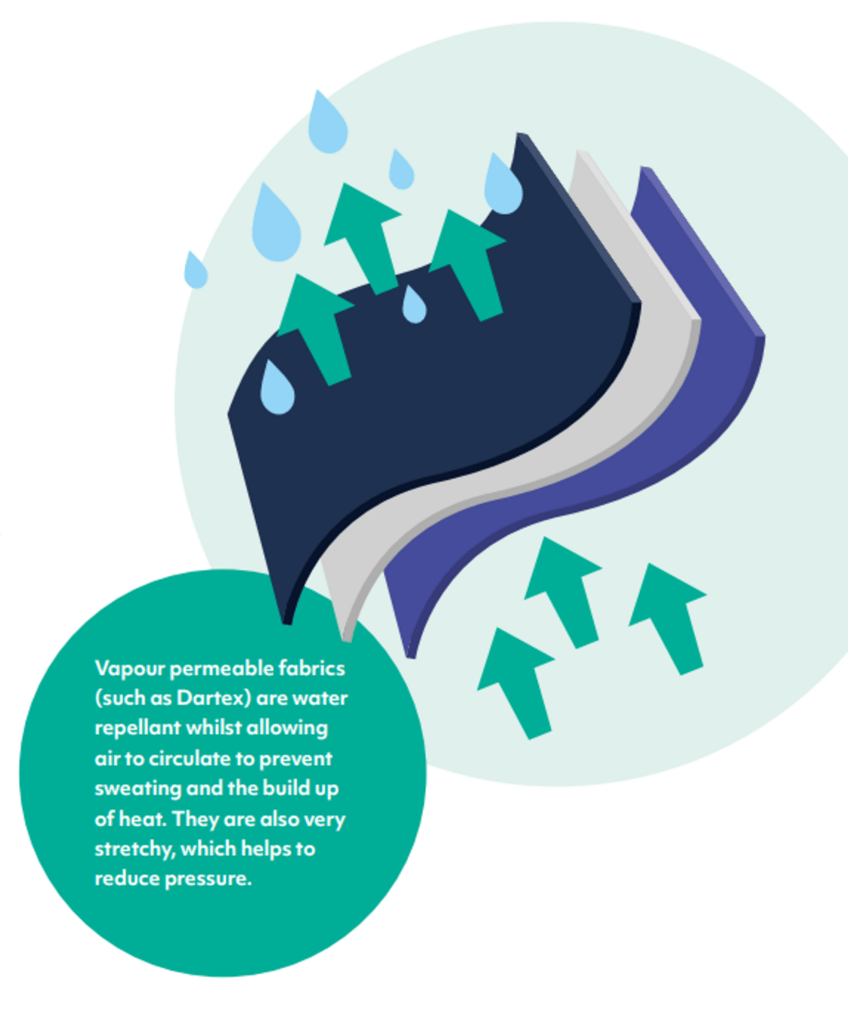
Properties of vapour-permeable fabric
Chair Bed
This unique product rotates and moves from a bed into a chair position, all operated by a handset in one smooth motion. This can help the user to stand from a sitting position using the side rails, and remove the challenge of getting in and out of bed for those with poor mobility.
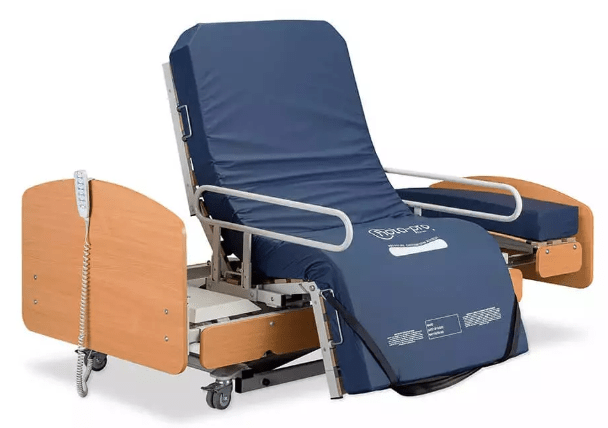
Independent Headrest or Legrest Action
Elevating the headrest and legrest section independently provides additional benefits when sleeping in a chair, as follows:
Headrest:
- Helps reduce sleep apnoea and snoring
- Improves circulation
- Reduces symptoms of acid reflux e.g. heartburn
Legrest:
- Reduces sciatica pain
- Reduces swelling
- Lowers risk of DVT and blood clots
- Reduces varicose veins
- Alleviates back pain
Summary
Sleeping in a chair is more convenient for people with poor mobility, and has advantages with helping breathing and circulation.
However, it can exacerbate other underlying health conditions, so should always be discussed with a medical health professional first to check it isn’t detrimental to someone’s health.
Speak to our team today





